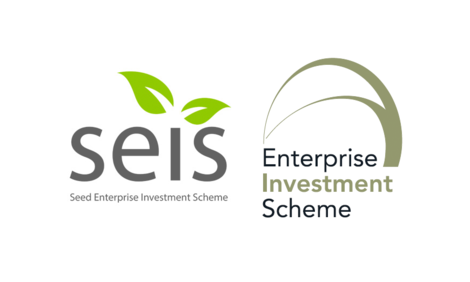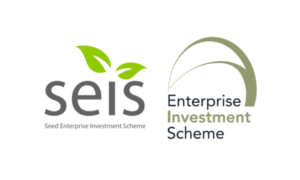
How To Complete The SEIS 1 And EIS 1 Compliance Statement And Claim The Tax Reliefs
Whether or not a company raising SEIS and/or EIS investment monies has first secured advance assurance confirmation from HMRC before completing its fundraising from UK tax resident investors, it will still need to complete and submit the SEIS 1 and EIS 1 compliance statements before its investors are able to claim SEIS and EIS tax relief of any kind.
If a company has not already received advance assurance then it should take care when it submits the SEIS 1 and EIS 1 compliance statements to ensure that included with these forms are a detailed covering letter and supporting documents (that would otherwise have been sent to HMRC if it had applied for advance assurance) that clearly set out how the company and the investment meet the relevant SEIS and EIS qualifying criteria. The covering letter should also cross refer to other relevant aspects such as the filing of SH01 and SH02 statement of capital forms at Companies House relating to the issue of new shares in the company in return for the SEIS and EIS subscription monies.

Importantly, if a company qualifies for both SEIS and EIS and raises above the SEIS £250,000 threshold then there needs to be clear delineation between the shares relating to SEIS and EIS in the subscription paperwork used. The shares should be issued in tranches even if there’s just a notional day’s gap between the shares issued pursuant to SEIS and then EIS. We have seen examples where this hasn’t happened (the mistake has even been made by a large City law firm specialising in this area). HMRC have as a result stated in such circumstances the the company can only receive benefit for one of SEIS or EIS – i.e only EIS as the company will have failed the ‘gross assets test’ whereby the SEIS rules state that the company must have gross assets of no more than £350,000 immediately before the SEIS shares are issued.
Relating to the last point on the gross assets test, note that the most common reason that investments fail to qualify is where the subscription monies have been received by the company after the shares are issued. This often happens where shares are issued on the promise of the cash coming in or shares are subscribed for at the time of the company’s incorporation.
Completing the SEIS 1 and EIS 1 compliance statement
The SEIS 1 and EIS 1 compliance statement forms must be completed separately.
The compliance statement sets out the subscribers (investors) who have requested SEIS and EIS certificates and contains a declaration that, as at the time of completion, the company has met the requirements for the scheme in question and that it will continue to meet all requirements of the scheme for the relevant period.
At the start of this process, it is important to note that a company is unable to submit an SEIS1 (and subsequently send the SEIS3/EIS 3 certificates) form until either it has:
a) been trading for at least 4 months; or
b) spent at least 70% of the monies raised by the relevant issue of shares.
So long as the company has been trading for at least 4 months or has spent at least 70% of the monies raised by the relevant issue of shares, it is our understanding that there is no time limit by which the SEIS 1 compliance statement must be submitted to HMRC by. However, you must submit an EIS 1 compliance statement within either two years of the date on which the company had been carrying out its qualifying business activity for four months, or within two years of the end of the tax year in which the shares were issued (whichever is later).
Note that, for the purposes of this provision of the SEIS and EIS rules, HMRC deems the date that the company started trading to be the date when a company first offers goods and/or services for sale irrespective of whether a sale has yet been made. This was the guidance we received when HMRC used to operate a responsive helpline for SEIS/EIS and is in accordance with the written guidance they give in VCM8151 which specifically deals with the basic age condition and the first commercial sale.
VCM8151 states that “The first commercial sale is defined by reference to the European Commission’s Guidelines on State aid to promote risk finance investments. Paragraph 52(xi) of the Guidelines defines a first commercial sale as “the first sale by an undertaking on a product or service market, excluding limited sales to test the market”. VCM8151 goes on to say that “In most cases the date of the first commercial sale is likely to be at or around the time the company starts to trade but in some cases it may be later than the date the company starts to trade. A company may use the date of commencement of trade, or the date the business was started, rather than the date of the first commercial sale for the purposes of applying the maximum age rules if it wishes. The date of commencement of trade and the date the business was started will always be a date earlier than, or the same date as, the first commercial sale. It follows that using the date of the first commercial sale provides a more generous timescale for companies able to identify that date”.
For EIS, the company must have been trading for four months regardless of how much of the money raised has been spent.
Please note that like advance assurance applications HMRC will now also accept SEIS 1 and EIS 1 compliance statements submitted by email. Please be aware though that there is a 8 MB limit in respect of the emails you send to HMRC, so if you need to include many supporting documents with the compliance statement (i.e. in circumstances where the company hasn’t already applied for advance assurance) then make sure the files are sufficiently compressed.
HMRC authorisation
If HMRC are satisfied with the compliance statement you sent, they will give your company authorisation to issue certificates to the subscribers listed on the compliance statement. HMRC will do this by completing and sending form SEIS 2 / EIS 2 by mail to you. The SEIS 2 / EIS 2 forms will contain an authorisation number which will authorise the company to issue SEIS 3 / EIS 3 certificates to the investors.
Together with the SEIS 2 / EIS 2 forms, HMRC will also send out the appropriate number of SEIS 3 and/or EIS 3 forms (compliance certificates) to the company. The company will then need to complete these certificates accurately and then send them securely to the individual subscribers who wish to claim the SEIS and EIS tax reliefs. This is an important step as investors cannot claim tax relief until the company has sent them the SEIS 3 / EIS 3 certificate. These SEIS 3 / EIS 3 certificates effectively function as proof that the investor has invested in a qualifying company and will allow them to claim tax relief against such investment.
The SEIS 3 / EIS 3 certificate contains important information that the investors need in order to claim their tax relief – including the time and amount of investment and also until what date (3 years from investment) the investors need to keep the shares in order to qualify for the Capital Gains Tax exemption if they later wish to sell their shares.
It is important to note that the investor receiving an SEIS 3 / EIS 3 certificate does not in any way guarantee that the investor will continue to be eligible for tax relief. The receipt of such a form merely indicates that the company has satisfied HMRC that, from the date of the issuing of the shares to the date of submission of the compliance statement, the company has met all the appropriate requirements. The company and the investor will need to ensure that the investment continues to meet the qualifying criteria for the duration of the three year qualifying period from the date the shares are issued.
Note that it will usually take between 4 to 6 weeks following receipt by HMRC of the relevant SEIS 1 or EIS 1 compliance statement before the company will receive the SEIS 3 / EIS 3 certificates for their investors.
SEIS and EIS funds
If, exceptionally, your investment was made through an approved investment fund, the startup company will issue form SEIS 3 / EIS 3 to the fund manager instead, and the individual investor as the beneficiary will in turn receive a SEIS 5 / EIS 5 certificate from the fund manager allowing the tax relief to be claimed through an approved fund.
Investors file their tax returns to claim their SEIS/EIS tax deductions
When the investors are filing their annual income tax returns they must claim the SEIS/EIS tax relief by filling in the “other tax reliefs” section on the Additional Information (SA101) page.
The investors will be required (at section 10) to enter the total amount that they have invested into companies under SEIS/EIS.
Note that it is open to investors to claim relief up to five years after the date of 31st January following the tax year in which they made the investment.
Also, investors should be aware of the ‘carry-back’ option they have when filing for their tax relief. This option allows the investors to choose to claim tax relief against their income tax liability of the previous year (as well as claiming tax relief in the year the investment/s were actually made). The carry-back options are subject to limits – £100,000 and £1 million for SEIS and EIS for that tax year respectively.
If you are employed under PAYE and do not file your own tax return, you will need to fill in and tear off pages 3 and 4 of the SEIS 3 / EIS 3 certificate and send them by mail to the HMRC office that deals with your tax deductions. This will be the office given along with your tax reference number on your payslip and also stated on the P60 form given you by your employer each year.
Fixed fee service
Depending on whether or not the company has already received advance assurance and/or there are any significant concomitant issues we need to address, if the scenario is otherwise straightforward we usually offer clients a fixed fee from £500 plus VAT to advise on, prepare and submit (together with supporting documents) the SEIS 1 or EIS 1 compliance statement on a company’s behalf and deliver to the company the correctly filled in SEIS 3 or EIS 3 certificates to be distributed to investors.
Please note that if you are submitting a SEIS or EIS compliance statement without having received advance assurance before raising the money then you will also need to supply HMRC with all the same information that you would have done if you had applied for advance assurance at the outset. This significantly increases our work and in such instances our fees start from £1,000 plus VAT where there are no other complicating factors.
Further reading:
How To Apply For SEIS And EIS Advance Assurance
This article is intended for general information only, applies to the law at the time of publication, is not specific to the facts of your case and is not intended to be a replacement for legal advice. It is recommended that specific professional advice is sought before relying on any of the information given. © Jonathan Lea Limited.
